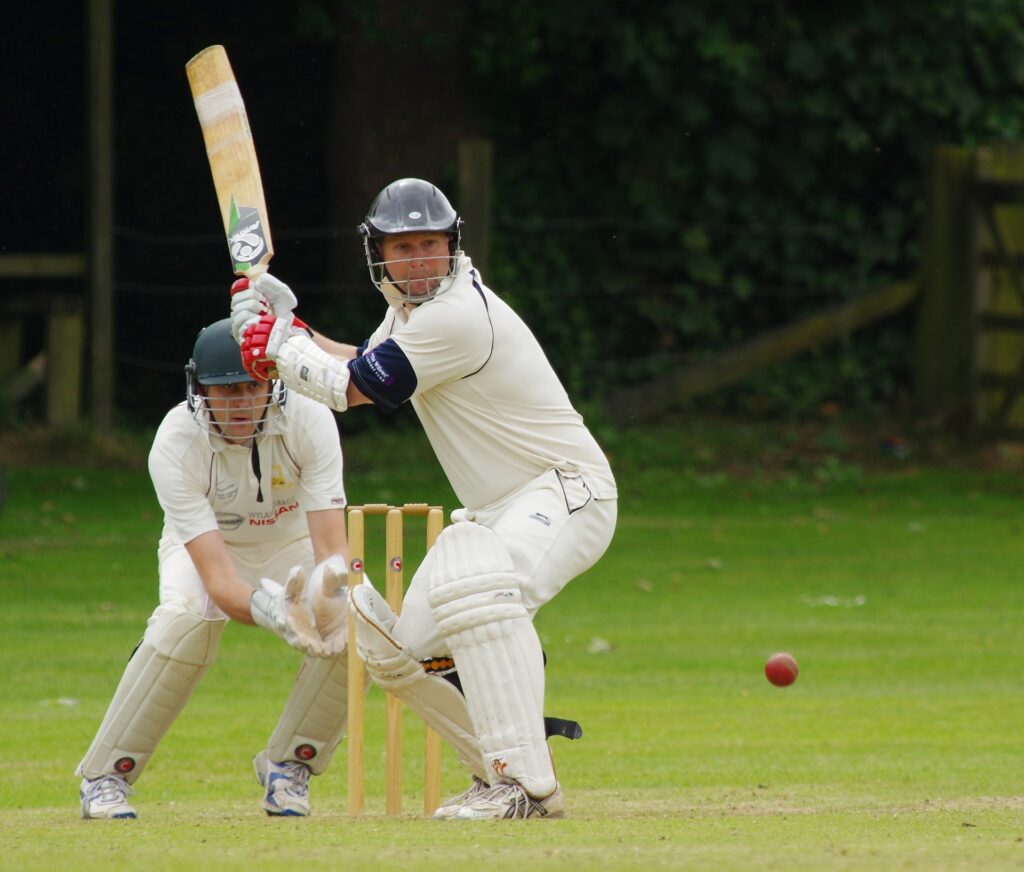Cricket, often referred to as the gentleman’s game, is a widely popular sport played and enjoyed by millions around the world. With its rich history, complex rules, and strategic gameplay, cricket offers a unique and thrilling experience for both players and spectators. If you’re new to the game and eager to learn how to play cricket, this beginner’s guide will provide you with the fundamental knowledge to get started.

Basic Rules:
Teams and Players:
Cricket is played between two teams, each consisting of 11 players.
The team that scores the most runs wins the match.
Objective:
The primary objective in cricket is to score runs while preventing the opposing team from doing the same.
The Playing Field:
Cricket is typically played on an oval-shaped field, with a rectangular 22-yard pitch at the center.
The pitch has stumps at each end, and bails on top to form the wicket.

Scoring Runs:
Batsmen score runs by hitting the ball and running between the wickets.
Runs can also be scored by hitting boundaries (4 runs) or clearing the boundary without the ball touching the ground (6 runs).
Dismissals:
Batsmen can be dismissed in various ways, including being bowled, caught, leg before wicket (LBW), run out, stumped, or hit wicket.
Bowlers aim to dismiss batsmen, while batsmen strive to protect their wickets and score runs.
Basic Equipment:
Bat:
Bats come in various sizes and weights. Choose one that feels comfortable and suits your playing style.

Ball:
A hard, leather cricket ball is used in professional matches. However, beginners may use a softer ball for practice.
Stumps and Bails:
Three vertical stumps and two bails form the wicket at each end of the pitch.
Protective Gear:
Batsmen wear protective gear such as a helmet, gloves, leg pads, and a box for safety.
Playing Positions:
Batsmen:
The primary goal of a batsman is to score runs. There are two batsmen on the field at a time.
Bowlers:
Bowlers aim to dismiss batsmen by delivering the ball with precision and skill. Different types of deliveries include fast bowling, spin bowling, and swing bowling.

Fielders:
Fielders support the bowlers by preventing runs and attempting to dismiss batsmen through catches or run-outs.
The Game Format:
Test Cricket:
Traditional format played over five days, allowing for in-depth strategic battles.
One Day Internationals (ODIs):
Limited-overs format with each team facing a set number of overs (usually 50) per innings.

Twenty20 (T20):
Shortest format with each team facing 20 overs per innings, known for its fast-paced and entertaining nature.
Conclusion:
Cricket is a sport that demands skill, strategy, and teamwork. As you delve into the game, remember that practice and experience are key to improving your skills. Whether you’re playing with friends in the backyard or joining a local cricket club, the joy of cricket lies in the camaraderie, competition, and the thrill of the game. So, grab your bat and gear up for an exciting journey into the world of cricket!






